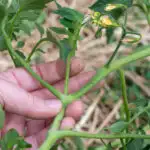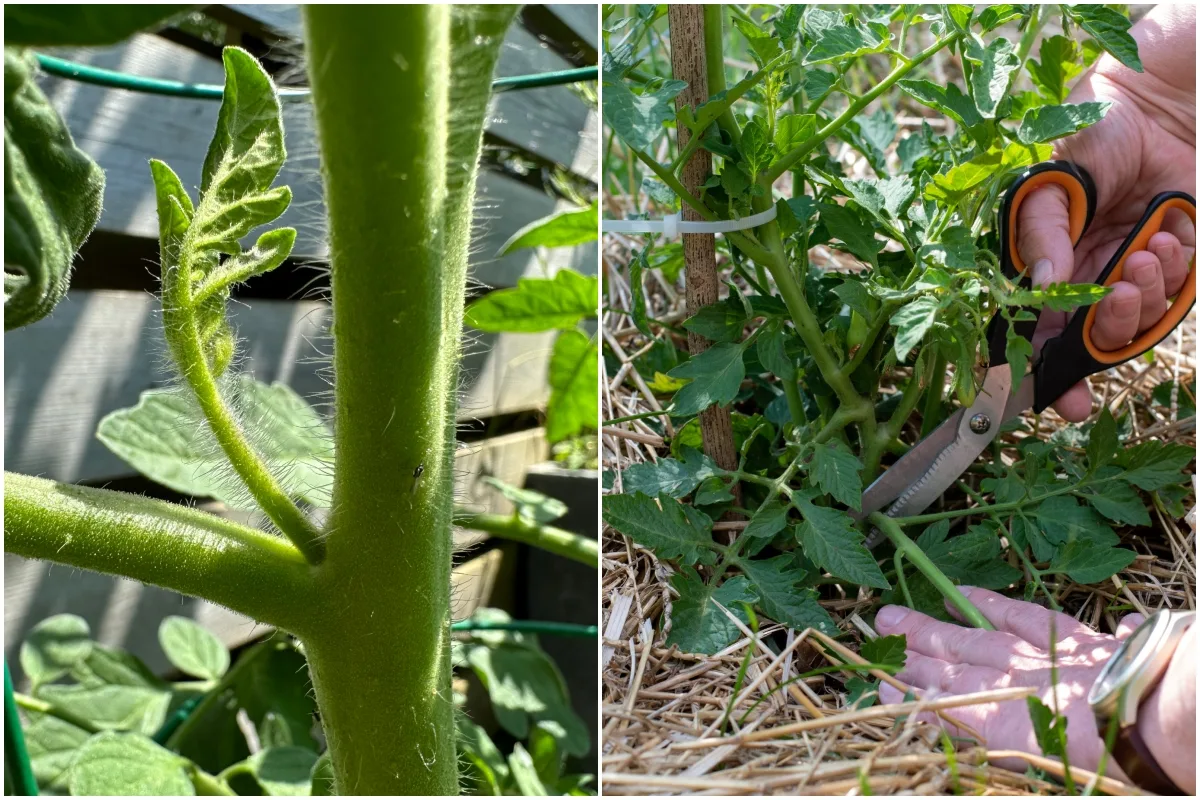
For ages now, there has been a war waged against tomato suckers.
Prune ‘em, pinch ‘em, cut ‘em off.
That’s what gardeners have been told for generations. So that’s what we do. But are tomato suckers really that bad? Do they take away energy from the plant causing fewer tomatoes? It’s time we take a closer look at this tomato pruning advice.
What is a sucker?
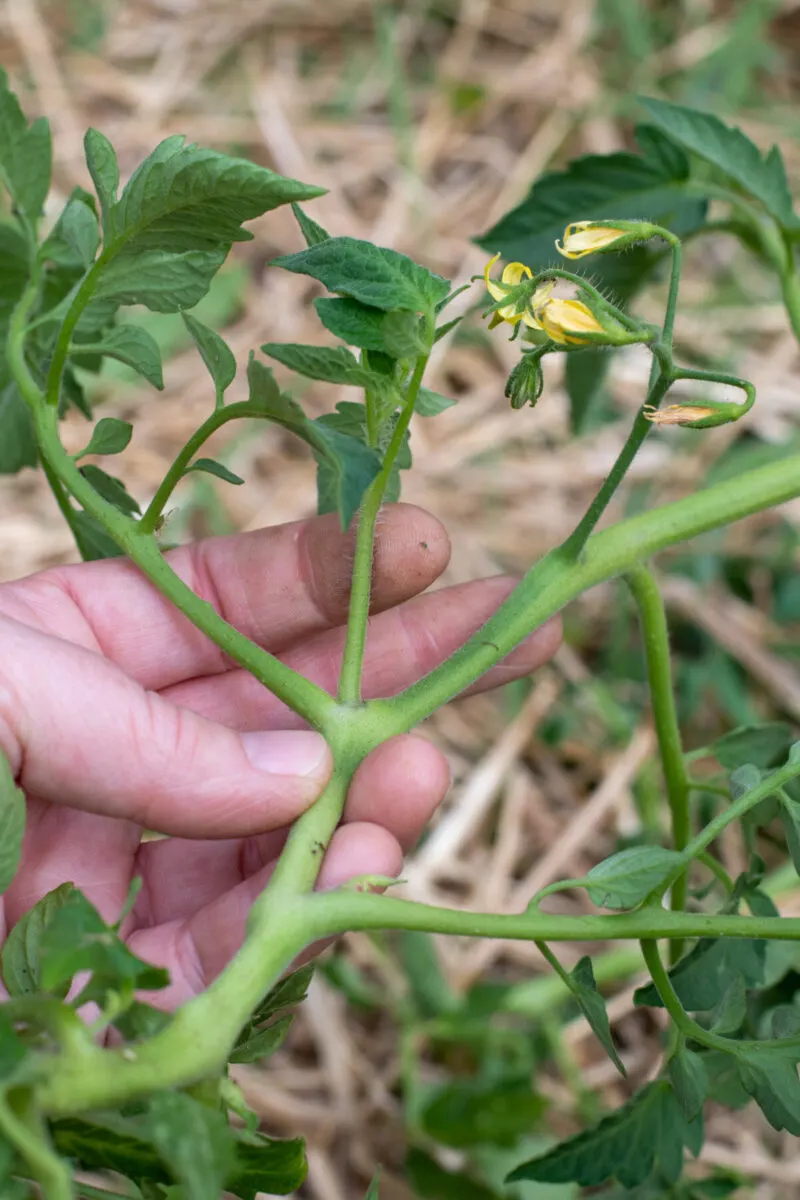
The reason given for removing tomato suckers is that they sap the plant of energy. While that’s true about suckers, there’s a bit of misinformation mixed in with this advice, which makes it irrelevant to tomatoes.
As we look at this piece of old gardening advice, I think it’s important to clarify something right away – a tomato sucker isn’t a sucker at all, botanically speaking.
Suckers are the spindly, new growth coming out of the ground at the base of trees and bushes. These tiny new “trees” do take away energy from the main plant and should be removed each spring.
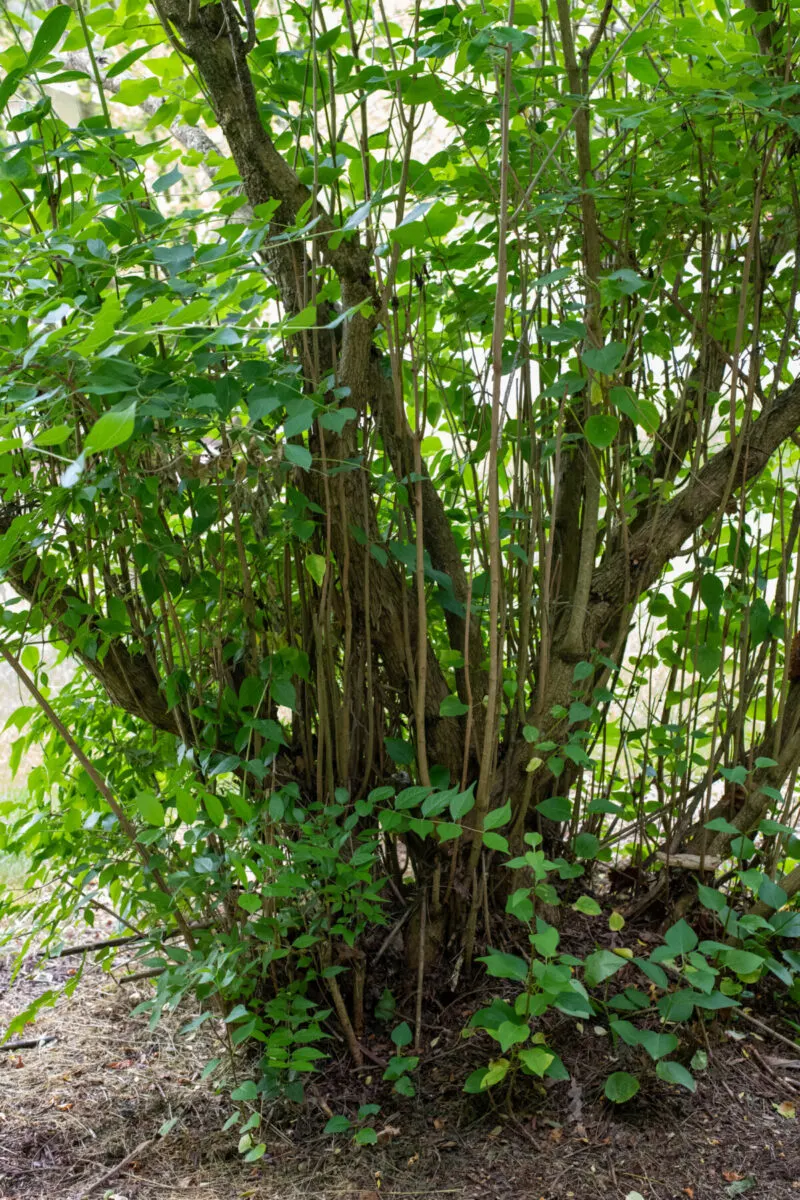
But what we call a sucker on a tomato is a new stem. And that stem will produce flowers and fruit like the rest of the plant.
But isn’t it taking away energy from the plant?
I’m not entirely sure where this line of thinking came from, but new growth doesn’t take away energy from the plant. That’s because each stem is entirely self-supporting. The leaves on the stem are there specifically to generate energy for that part of the plant through photosynthesis.
Wherever there are leaves, the plant produces energy. So all new growth is its own energy source.
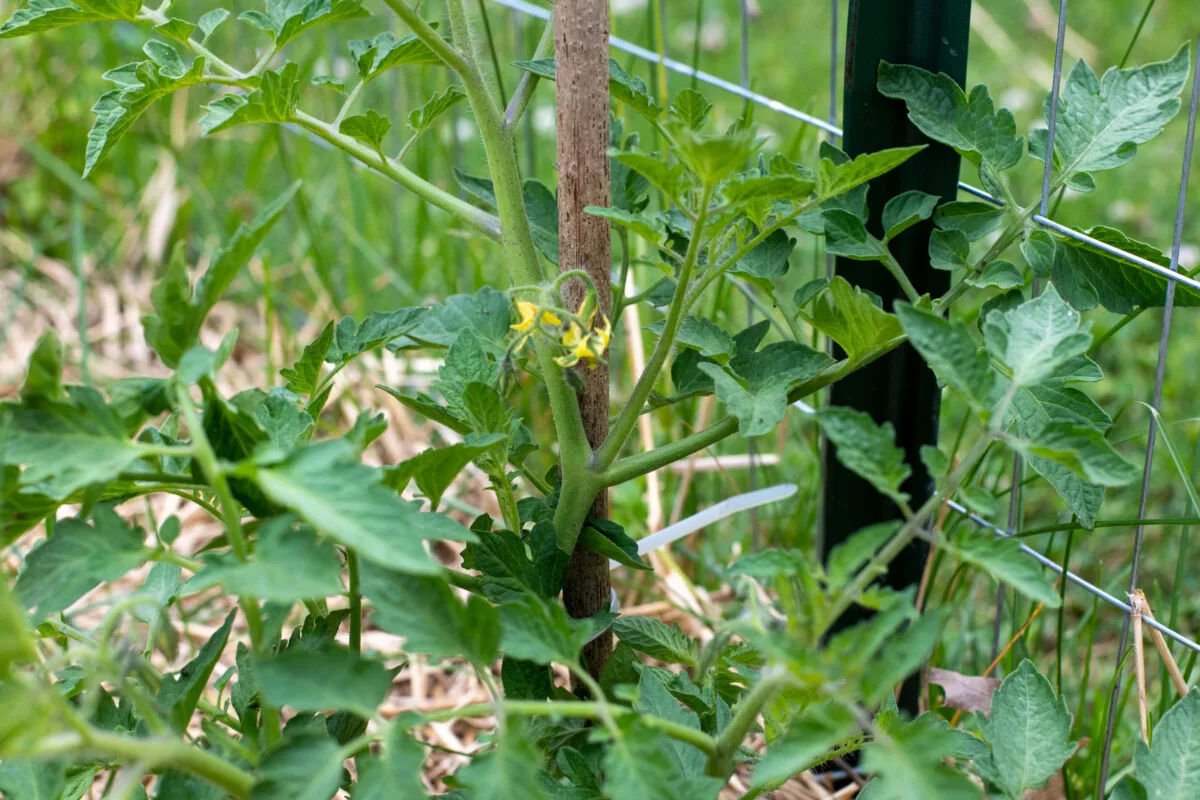
And the plant will not grow more than the root system can support, especially if you bury your tomato plant deeply or sideways. So, if you’ve got a tomato plant putting out lots of new “suckers,” you’ve got a healthy plant. It’s a good sign. The better question is, “Do I have a long enough growing season for all of these suckers to produce fruit?”
How to Properly Prune a Tomato Plant
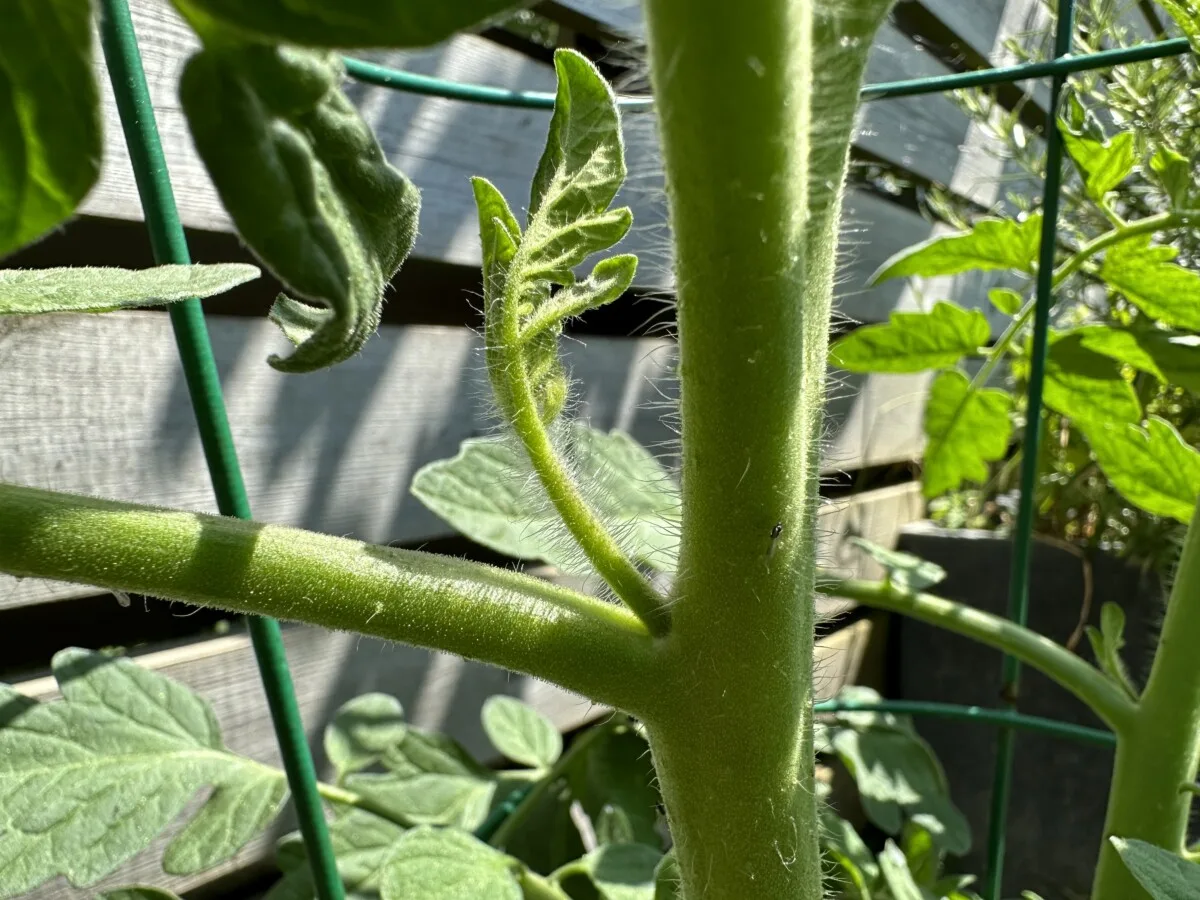
Pruning a tomato plant is important. Left to its own devices, it will become overgrown and dense, meaning fewer tomatoes will ripen on the vine.
We want to remove enough new growth to ensure good airflow throughout the plant. Air exchange is important in preventing disease. Damp leaves can dry off quickly, and there is less chance for bacteria and fungi to grow on a tomato plant that is pruned regularly.
Light is equally important. As we’ve already noted, it’s how the plant produces energy as well as assists in ripening the tomatoes. You want to ensure that plenty of light can reach the plant’s interior; this will help to ripen tomatoes more quickly. Of course, you want enough leaves to form a canopy that will provide shade to prevent sunscald.
Prune to Set Your Tomato Up for the Season
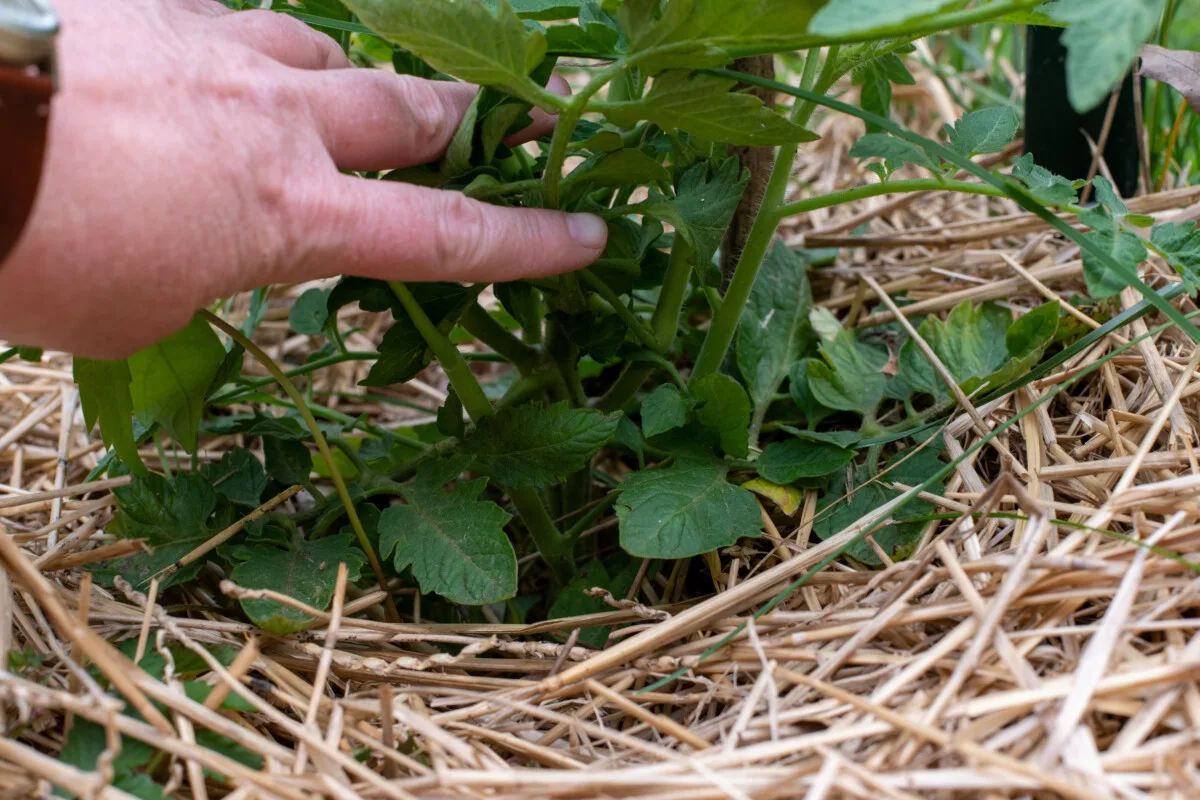
Regardless of what variety you grow, you’ll want to prune around the base of the plant. Once the tomato is established and is around a foot tall, go in and clean up around the base of the plant. Remove any new growth from the first 4”-6” up the main stem, so the plant has good ground clearance. This will help prevent soilborne diseases, as you’ll be keeping the leaves away from the ground.
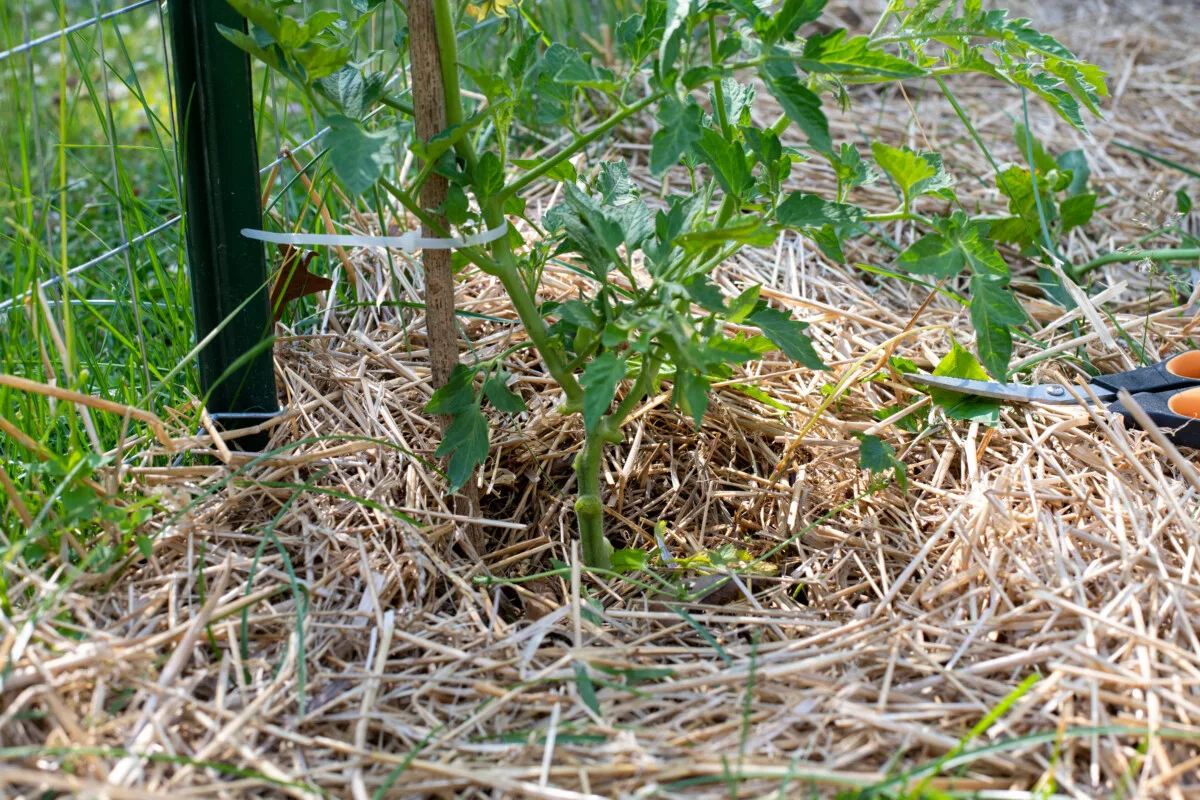
Pruning Differences in Determinate and Indeterminate Varieties
There are two types of tomatoes: determinate, or bush types and indeterminate, or vining types.
Pruning Determinate Tomatoes
Determinate tomatoes are usually hybrids. They’ve been bred to grow to a set height, then set their fruit all at once. Determinate tomatoes are a great choice if you plan on canning, as you’ll have an abundance of fruit ready all at the same time.
Once they have produced their fruit for the season, determinate tomatoes tend to die off.
Because they have a set height and don’t continue fruiting after the initial yield, it’s important to be more critical about pruning. Every stem or sucker you remove is taking away from the number of tomatoes the plant will yield.
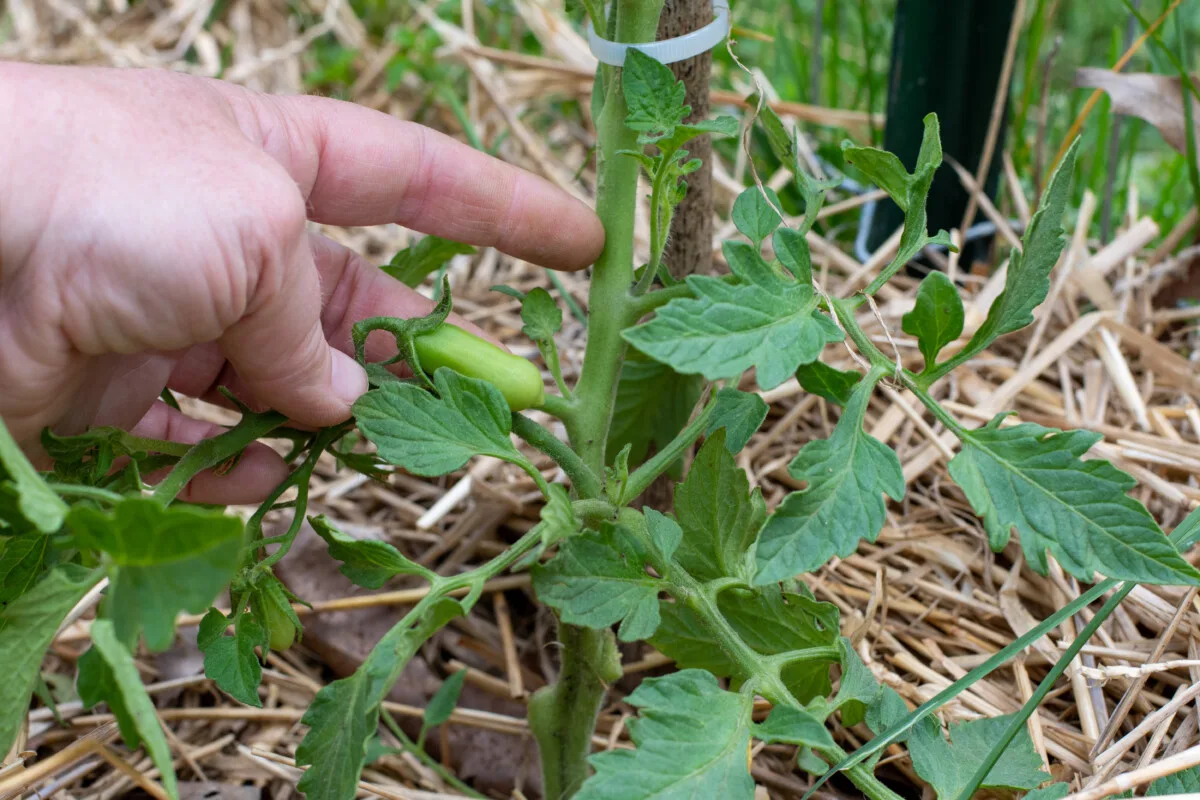
In general, you won’t need to do much pruning, if any, perhaps removing a side shoot here and there to allow light and air into the plant’s interior.
However, there is a scenario in which pruning a determinate tomato makes sense, and that is if you live somewhere with a short growing season. If the variety of tomato you have chosen will start bearing fruit close to your first frost date, then it’s better to prune off any new growth that shows up once the plant has set fruit. This puts all the energy into the developing fruit, and no energy is wasted on a few straggler flower clusters that may show up.
If you live in a region with short growing seasons, you’ll want to check out these fast-maturing tomatoes.
Pruning Indeterminate Tomatoes
These guys are the tomatoes that gave rise to this whole prune-all-the-suckers, nonsense.
Indeterminate tomatoes are a whole other ballgame. These buggers are more closely related to their native, vining cousins in South America. Unless properly supported and pruned regularly, they will happily take over your garden.
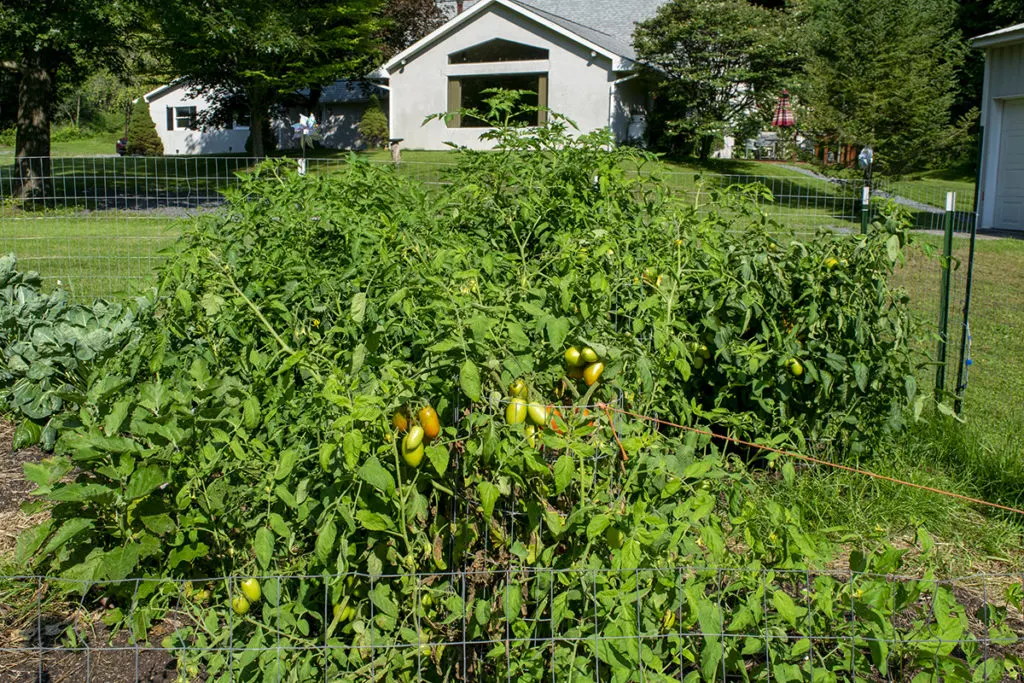
Indeterminate varieties will continue to grow in length (and width, if not pruned), producing fruit all along the stem as it does. This continuous growth is why it’s important to grow indeterminate tomatoes with some sort of support.
To understand how to prune an indeterminate tomato, it’s important to know how it grows and where new flowers develop. This is also where the “suckers” come in.
Once indeterminate tomatoes reach a certain height, they will produce a flower cluster above a stem with leaves. The flower cluster and leaves will grow, and the leaf above that flower cluster puts out a new stem at the crotch – what we call a sucker, even though it isn’t. This new stem, or sucker, will produce new leaves and a flower cluster. And then the leaf above that flower cluster puts out a new stem…you get the idea.
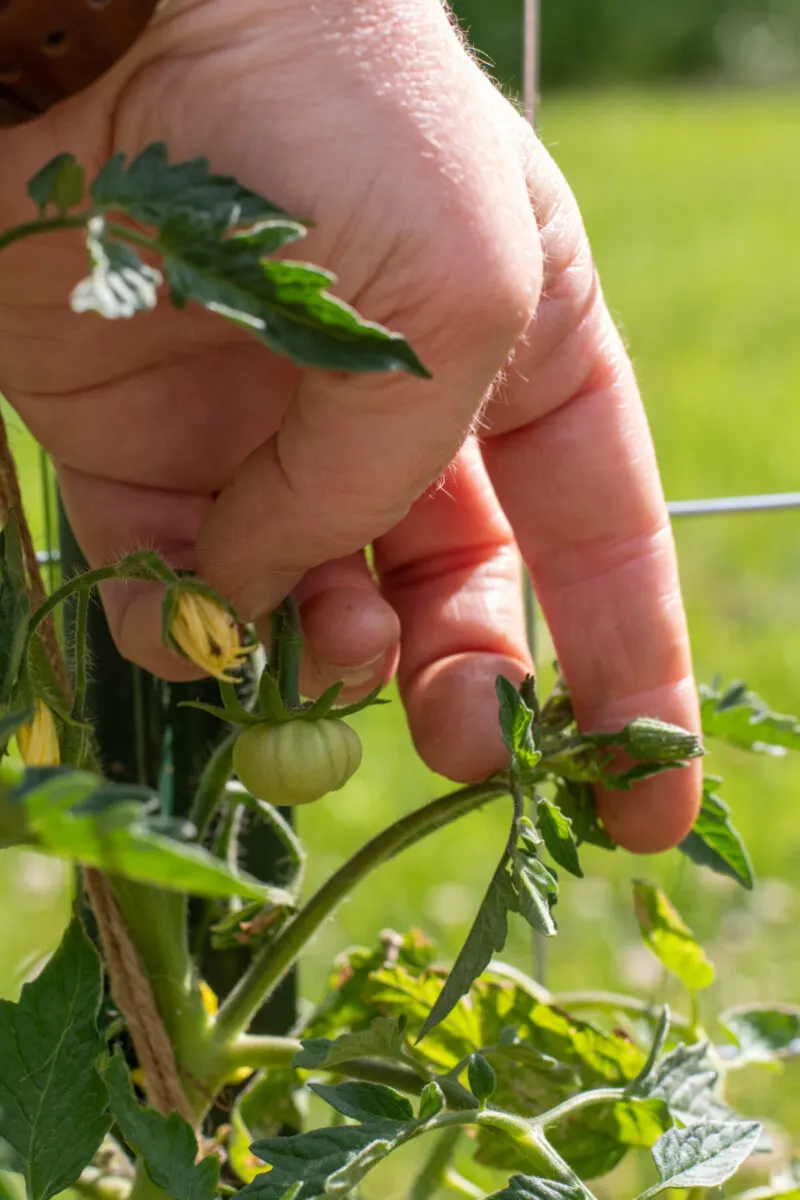
I think this is where the advice to prune suckers started. If left unchecked, you’ll have a tomato plant slowly taking over your garden. But we want a tomato plant that will put more of its energy into fruit.
Pruning your indeterminate tomatoes at the start of the season and every week or two thereafter will have the desired effect.
When choosing what to cut, look at the overall shape of your tomato plant. You don’t want any areas so dense with foliage that you can’t see the center of the plant.
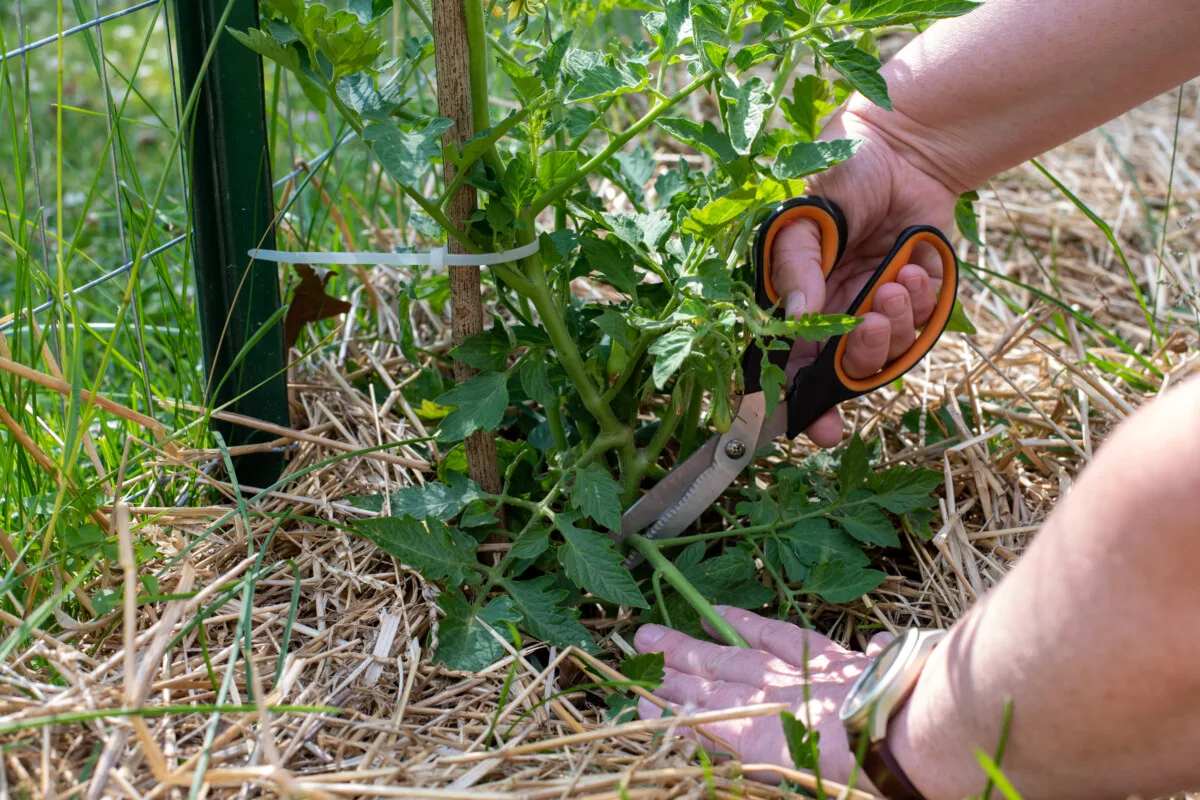
Prune any new stems or suckers that are:
- preventing other flower clusters from receiving adequate light.
- growing too densely on a portion of the plant and blocking light and airflow.
- rubbing against a larger, more established stem.
As the plant grows, it will continue to produce new flower clusters above the ones already producing fruit. As you pick the ripened tomatoes, you can prune any new stems that develop below that area, as the canopy above it will likely shade out the resulting flowers. About midway through the summer, the bottommost leaves on tomatoes will begin to die and fall off anyway. You can remove them sooner, which will encourage new growth.
Pruning Espaliered Tomatoes
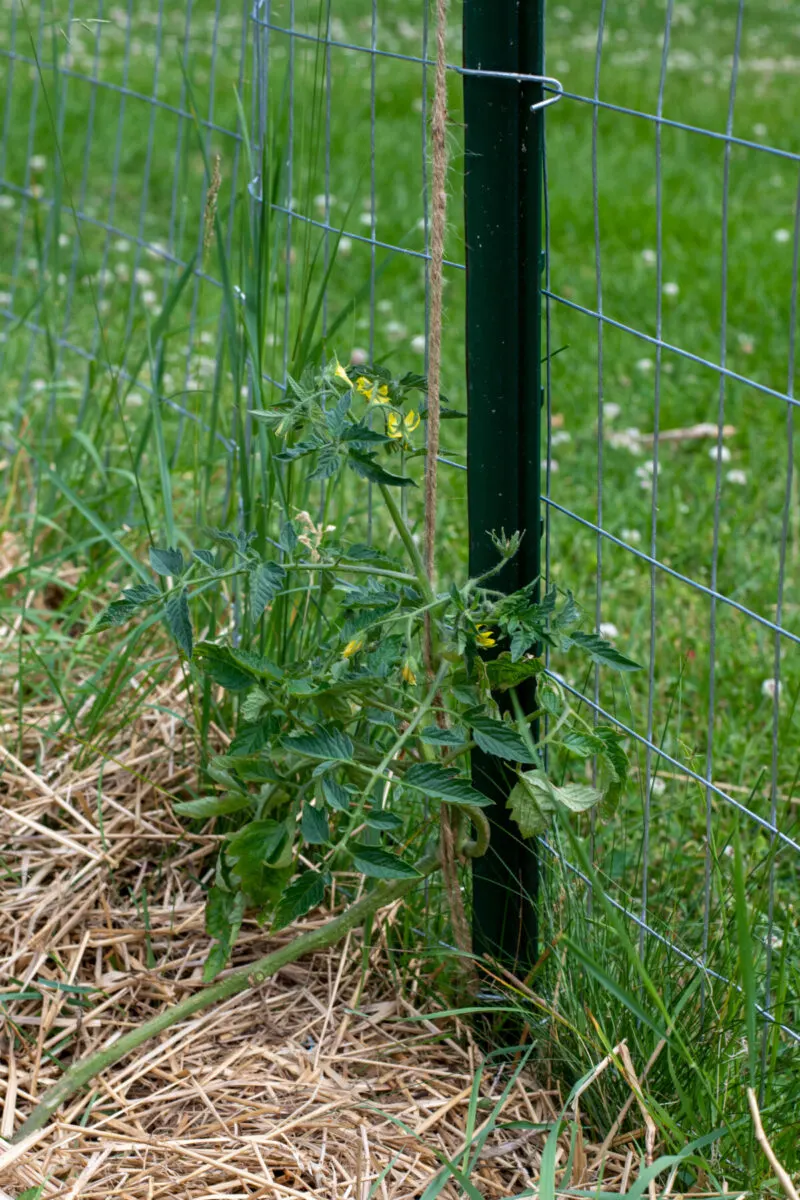
Indeterminate tomatoes are excellent candidates for training up a string. When growing tomatoes this way, you need to be very specific in how you prune the plant, as the string holds the full weight of the mature plant. You’ll end up being more aggressive with your pruning of new side shoots.
If you want to grow tomatoes up a string, you can read all the details on how to do it here.
Pruning Indeterminate Varieties at the End of the Season
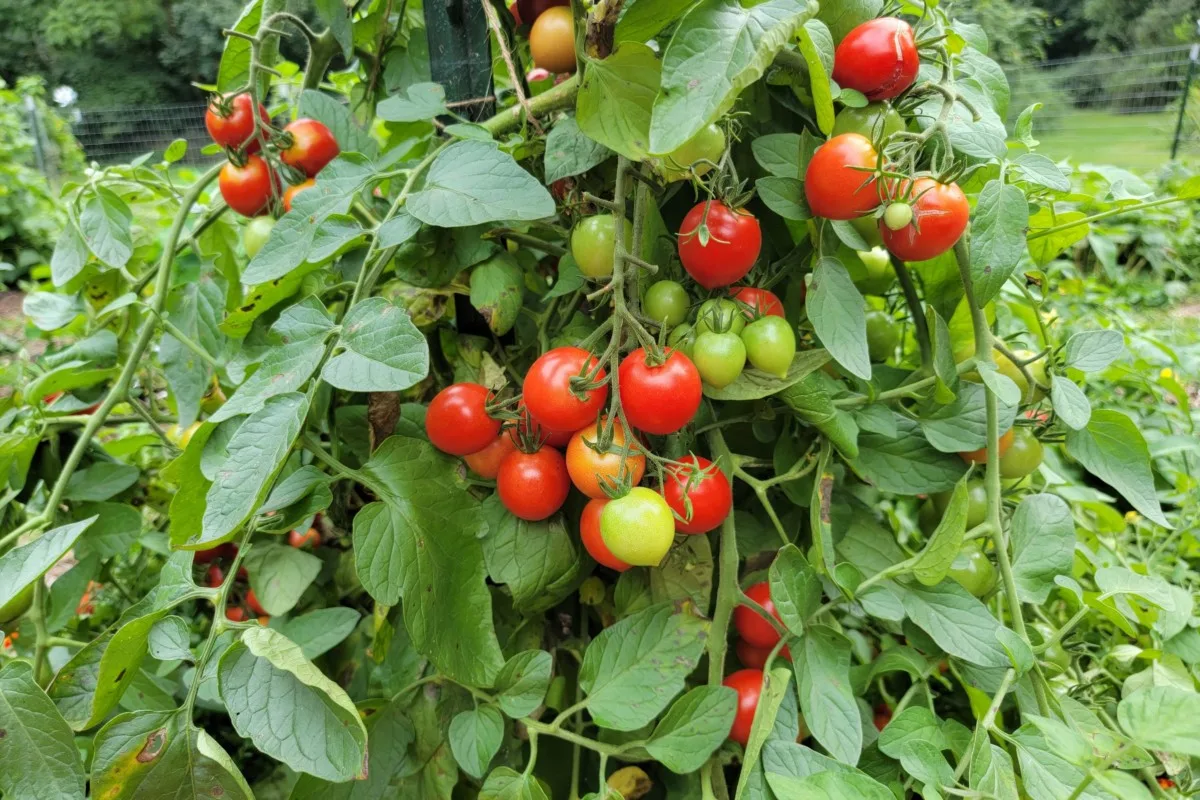
As the season draws to a close, you’ll want to seriously discourage new growth so the plant can put all its remaining resources into ripening the fruit on the vine before your first frost. It’s a good idea to start about four weeks before your first expected frost.
You’ll want to cut the top of the main stem off to stop it from growing. However, be mindful that this will likely cause the plant to start pushing more growth out from the sides of the existing stem. So, now is the time to pinch off all the suckers you find.
Be diligent in pruning back any new growth, and you’ll finish the season with very few green tomatoes. But even if you do end up with a few, we have plenty of tasty ways to cook green tomatoes.

Get the famous Rural Sprout newsletter delivered to your inbox.
Including Sunday musings from our editor, Tracey, as well as “What’s Up Wednesday” our roundup of what’s in season and new article updates and alerts.


